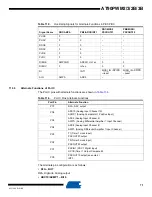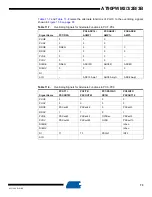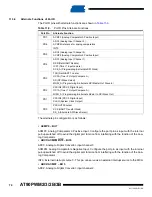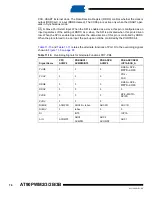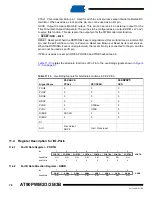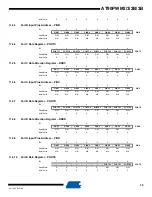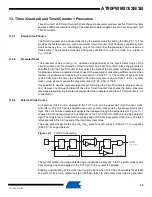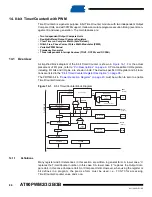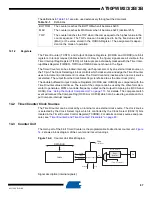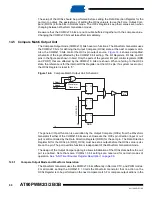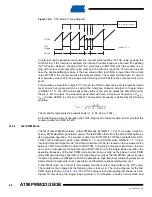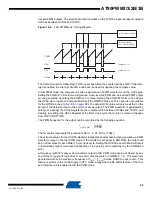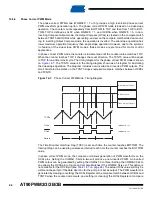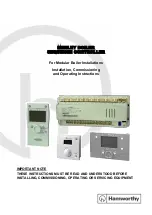
82
4317I–AVR–01/08
AT90PWM2/3/2B/3B
Note:
1. n = 3, 2, 1 or 0.
When changing the ISCn1/ISCn0 bits, the interrupt must be disabled by clearing its Interrupt
Enable bit in the EIMSK Register. Otherwise an interrupt can occur when the bits are changed.
12.0.2
External Interrupt Mask Register – EIMSK
• Bits 3..0 – INT3 – INT0: External Interrupt Request 3 - 0 Enable
When an INT3 – INT0 bit is written to one and the I-bit in the Status Register (SREG) is set
(one), the corresponding external pin interrupt is enabled. The Interrupt Sense Control bits in the
External Interrupt Control Register – EICRA – defines whether the external interrupt is activated
on rising or falling edge or level sensed. Activity on any of these pins will trigger an interrupt
request even if the pin is enabled as an output. This provides a way of generating a software
interrupt.
12.0.3
External Interrupt Flag Register – EIFR
• Bits 3..0 – INTF3 - INTF0: External Interrupt Flags 3 - 0
When an edge or logic change on the INT3:0 pin triggers an interrupt request, INTF3:0 becomes
set (one). If the I-bit in SREG and the corresponding interrupt enable bit, INT3:0 in EIMSK, are
set (one), the MCU will jump to the interrupt vector. The flag is cleared when the interrupt routine
is executed. Alternatively, the flag can be cleared by writing a logical one to it. These flags are
always cleared when INT3:0 are configured as level interrupt.
Bit
7
6
5
4
3
2
1
0
-
-
-
-
INT3
INT2
INT1
IINT0
EIMSK
Read/Write
R/W
R/W
R/W
R/W
R/W
R/W
R/W
R/W
Initial Value
0
0
0
0
0
0
0
0
Bit
7
6
5
4
3
2
1
0
-
-
-
-
INTF3
INTF2
INTF1
IINTF0
EIFR
Read/Write
R/W
R/W
R/W
R/W
R/W
R/W
R/W
R/W
Initial Value
0
0
0
0
0
0
0
0




